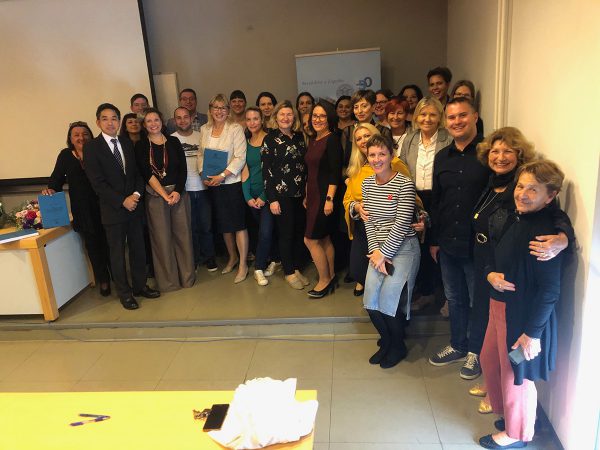Title: Computational modelling in engineering analysis of
textiles and clothes
Project funding: Croatian Ministry of Science, Education and Sports
Code: 117-1171879-1899
Project Leader: Prof. Željko Šomođi, Ph.D.
![]()
Project Summary:
Numerical methods of mechanics of solids and structures are being adapted and applied for engineering analyses of a selection of tipical problems related to fabrics and textile products.
Stress analysis of a reinforcement of an opening on clothes is performed by the finite element method. Under the assumption of linear elastic isotropic tension-only material distribution of stress and strain is evaluated in a tipical tensile specimen with a reinforced opening. Nonlinearity related to the lack of compressive carying capacity is resolved using an iterative procedure. The results serve as a ground for optimal design of the reinforcement with respect to the criteria of strength and material cost. This part of research has resulted in Anica Hursa’s doctoral thesis.
Nonlinear deformation of the fabric under tensile loading is analysed using a simplified geometrical model of woven structure. The basic cell is conveniently discretised as to model the influence of structure geometry and tensile and bending resistances of the yarn to the global tensile deformation. Geometric nonlinearity is accounted for by writing static conditions in a general deformed configuration, and the corresponding system of nonlinear equations is solved by an incremental procedure. Such a relatively simple model with a very limited number of parameters has shown the capacity of reproducing a wide spectrum of nonlinear tensile response curves tipical of textile materials. Furthermore, the model is enhanced by elastoplastic tensile response of the yarn which gave the effect of residual deformation in unloading. It appears that such a model can have a tensile reponse very close to the one experimentally recorded within KES tensile test. Another direction of generalisation of the basic tensile model is related to biaxial tension, with the aim of nonlinear anisotropic characterisation of fabric in plane stress.
An initial research has been undertaken in the field of modelling of textile anisotropy. The homogenisation procedure is applied to a simplified stripwise composite model of woven fabric with diagonal pattern in order to evaluate global elastic orthotropic constants. Such a model offers an opportunity of computational prediction of so called weft distortion phenomenon tipical for some types of woven fabrics.
Current research (november 2010) deals with a computational model of fabric drape as a problem of stable postbuckling state.
Research activity of Slavica Bogović covers the application of mathematical methods in modelling and design of clothes for persons with disabilities and deformities. She is currently working on her doctoral thesis.
Dr. sc. Ana Kunštek is active in application of the principles of ergonomics to clothing technology and rehabilitation process after injury.
![]()

